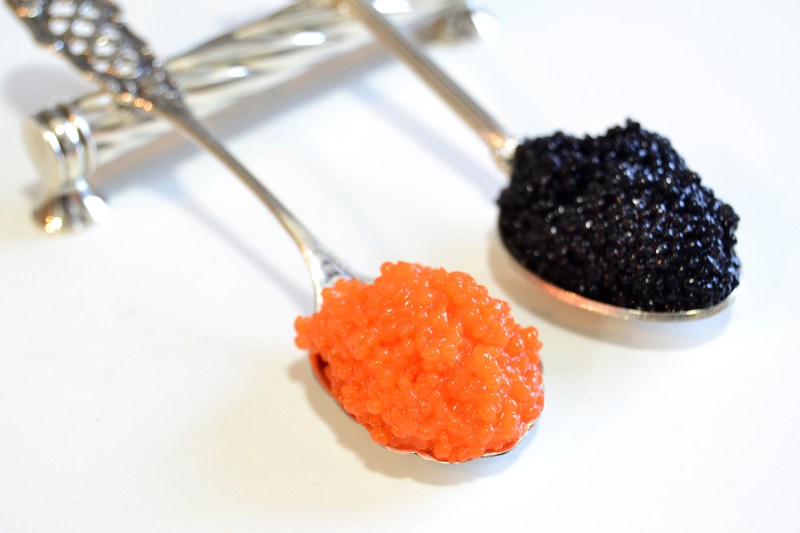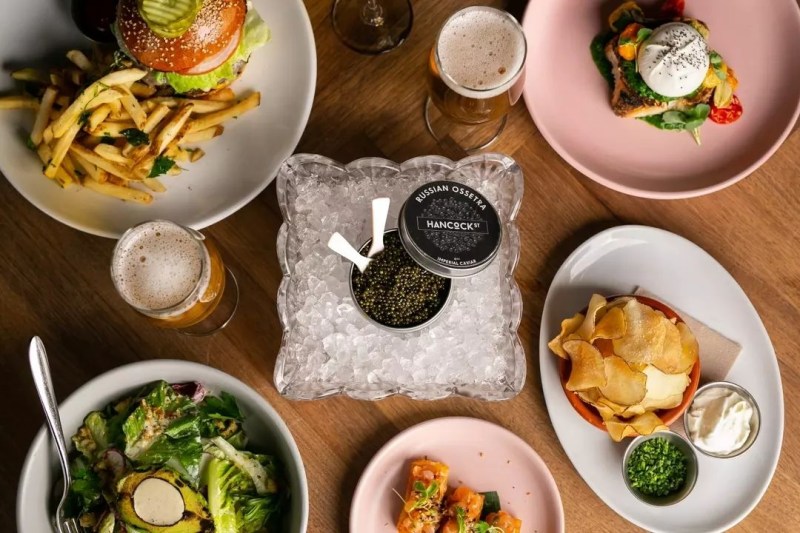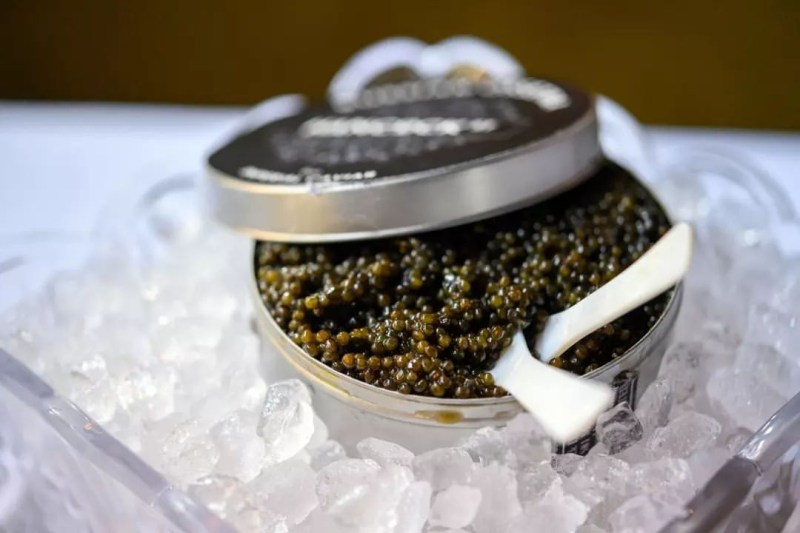
Caviar, which is deemed to be the pinnacle of luxury by many, has been a dining delicacy since the times of ancient Greece. Derived from the Persian word chav-jar, which means “cake of strength,” this black gold was integrated into modern-day popularity by Russian royalty.
Albeit a simple fare made from sturgeon roe, the inherently classy caviar can also be intimidating. But caviar is also having a reconnaissance and for those ready to indulge in this expensive fish egg appetizer, we’ve collected the expertise of John McDonald, founder of Mercer Street Hospitality’s Hancock St. With an affordable and approachable caviar service at Hancock St., McDonald is more than happy to share his caviar expertise.

Types of caviar
Caviar is eggs or roe collected from the sturgeon family of the best fish, traditionally sourced from the Caspian and the Black Sea. Although all female fish lay eggs, only sturgeon eggs are considered caviar. Other forms of fish eggs like salmon, trout, and flying fish are “roe” and are a popular and affordable alternative to caviar. And while the highest quality and most famous caviar is produced in Russia and Iran, America actually has its own domestic caviar farms.
There are three main varieties of sturgeon caviar, each varying in price, taste, and quality. Caviar is also graded based on the size, texture, and flavor of the eggs.
Grade 1: Firm, large eggs uniform eggs (more expensive).
Grade 2: Less delicate and less uniform eggs (less expensive)
Beluga
The rarest and most expensive caviar is noted for its large light-gray pea-sized pearls with a buttery, creamy, nutty flavor and unique full-flavored aftertaste. Due to the decline in the wild Beluga population, this caviar is closely regulated, which has resulted in its high price and rarity.
Ossetra
Ossetra is the most popular caviar in the world, known for its rich, nutty, briny flavor and firm, juicy, deep brown to gold pearls. While still expensive, it is the most affordable high-end caviar on the market.
Sevruga
The most common and affordable caviar varietals, Sevruga is said to have the most intense and rich flavor. With small, clear pearls and pale-grey juicy insides, this caviar has a smooth, buttery flavor and a fresh, clean finish.

Serving caviar
Caviar is best enjoyed alone, right off a spoon. Caviar is classically served on a bed of ice with a caviar spoon made of ceramic, glass, or mother-of-pearl. Non-metallic utensils should be avoided as they can tint the natural flavor of caviar. However, caviar is also delicious when paired with an array of accompaniments.
“For an exquisite caviar experience, I recommend the following serving suggestion,” said McDonald. “Start with toasted brioche, which provides a delightful crunch and buttery flavor. On top of the brioche, spread a thin layer of crème fraîche to add a creamy and tangy element. Finally, generously layer the caviar on the crème fraîche, allowing its rich and briny flavors to shine. The combination of the toasted brioche, creamy crème fraîche, and decadent caviar creates a perfect balance of textures and flavors.”
Pasta and scrambled eggs are two other foods that go fantastically with caviar, giving them an intense flavor and luxurious texture. The creaminess of the eggs complements the briny caviar, making it a stellar breakfast for a special occasion.
McDonald does have another suggestion, though, one that is less common.
“While it may not be considered conventional,” McDonald said, “one unexpected pairing idea is to scoop caviar onto a Pringle chip and take a single bite. This unconventional combination offers a playful contrast between the crispy chip and the delicate burst of flavor from the caviar. It’s a unique and surprising way to enjoy caviar, providing an unexpected twist to your taste buds.”
If you’re looking for the best drinks to sip alongside your caviar, there are plenty of excellent options. Traditionally, caviar is paired with premium frozen Russian vodka. The vodka’s lightness brings out the caviar’s distinct salty sea flavors. Champagne and martinis (non-fruit based) are also classic drinks for caviar.
“Champagne’s effervescence and crispness complement the richness of caviar exceptionally well, enhancing its flavors,” McDonald said. “Classic martinis, with their clean and dry profile, also provide a sophisticated and balanced accompaniment to caviar. While specific cocktails may vary depending on the menu, a traditional martini or a champagne-based cocktail would be a safe and enjoyable choice to savor alongside caviar.”

Storing caviar
Caviar, like most seafood dishes is best eaten fresh, and a tin of it should be eaten soon after opening. Opened caviar should be tightly resealed and stored in the coldest part of the fridge for up to three days. Unopened caviar can be refrigerated for about two weeks.
Editors' Recommendations
- Is honey a superfood? Here are 10 reasons we think so
- How to break a fast — the best foods to eat
- What to know about Brazilian BBQ, a delicious meat marathon
- Here’s how to crawfish boil the right way
- The complete guide to kitchen knives (and how to use them like a pro)




